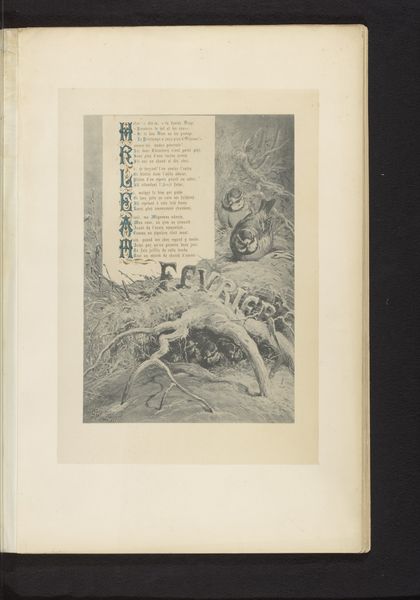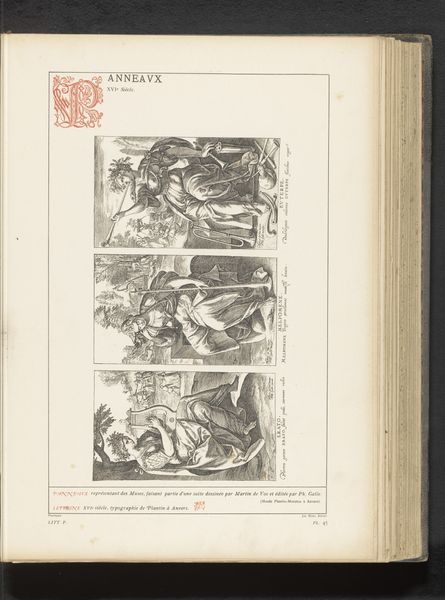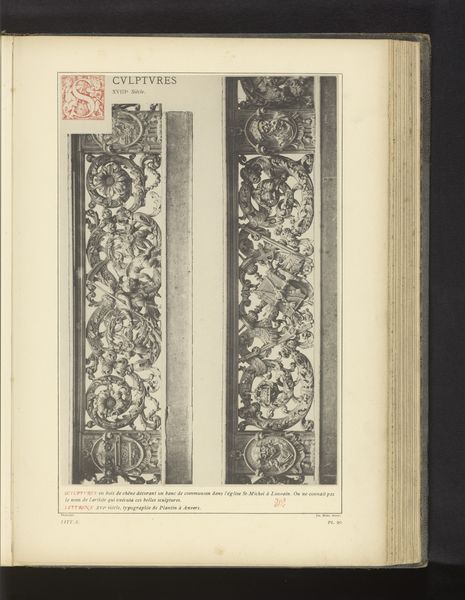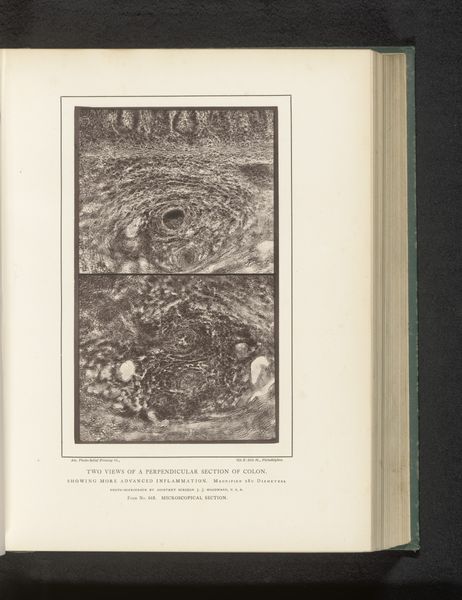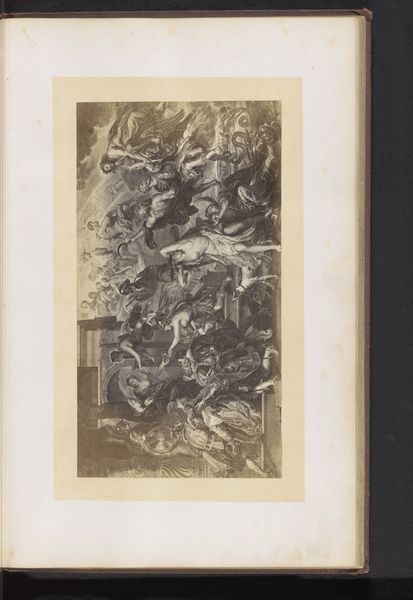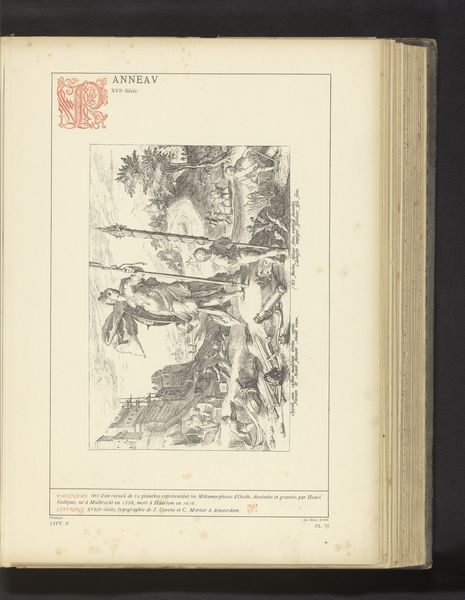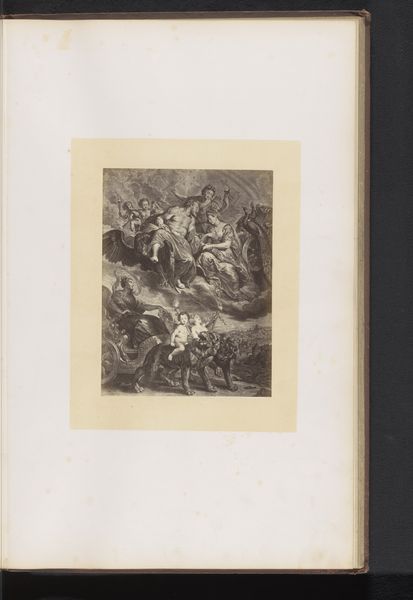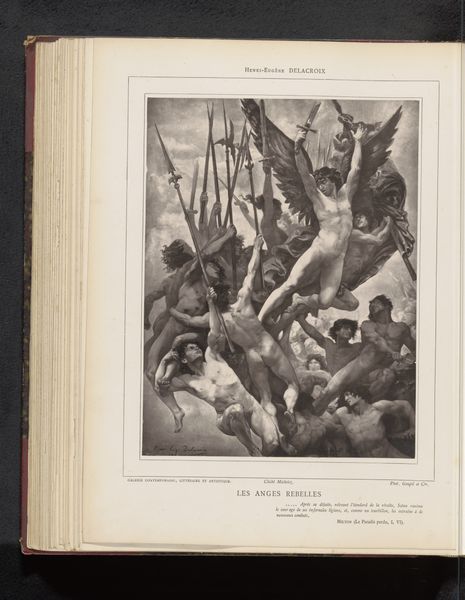
Reproductie van Portret van Bartholomeus Spranger en zijn vrouw Christina Muller, naar een prent door Bartholomeus Spranger before 1881
0:00
0:00
Dimensions: height 342 mm, width 233 mm
Copyright: Rijks Museum: Open Domain
Curator: This is a reproduction of a portrait of Bartholomeus Spranger and his wife, Christina Muller. It's based on an engraving by Spranger himself, though this particular print was made before 1881. The scene is teeming with allegorical figures, and rendered in intricate detail through etching, engraving, and lithographic techniques. Editor: My immediate sense is one of overwhelming drama and complexity! There’s so much visual information packed into this print. It feels theatrical, even unsettling, like a stage crowded with figures locked in a silent, intense performance. Curator: That feeling aligns well with Spranger's historical context. A key artist of Northern Mannerism, he and his peers favored artifice, distortion, and highly emotional scenes. Spranger moved in courtly circles; he worked for emperors, exploring political and religious issues through allegory. How might the symbols reflect the social landscape, considering the couple is surrounded by a tumultuous swarm of figures? Editor: Absolutely. Take, for instance, the positioning of Bartholomeus. He is not only more prominent, but is actively engaged in what seems like warding off or maybe even engaging with the surrounding skeletal figures. This suggests his role as a protector, his connection to mortal anxieties and his response to it, his dominance made more prominent by being situated below the woman’s portrait. I wonder if that has bearing on the power dynamics during that era, in comparison to Muller above, calmly detached, presented almost as an idea rather than actively participating in this drama of life and death. Curator: That's astute. The print can also be interpreted through a feminist lens, with considerations of how Christina Muller, despite appearing detached, still influences how we perceive Spranger as she represents virtue and immortality, not subject to this earthly turmoil. Spranger's decision to portray her this way speaks volumes, challenging accepted notions of womanhood in relation to the transient material world in comparison to men who have dominion over it. Editor: That dynamic reflects in the symbolic use of light and darkness. While shadows dominate the lower half of the composition—around Spranger himself—there’s a consistent brightness surrounding Christina Muller, whose portrait sits in that clear oval above the rest of the tumult below, hinting, like you were mentioning before, her state as something unchanging, permanent. Perhaps they’re communicating an acceptance of woman’s position and influence as removed from the common anxieties that grip mortality. Curator: Indeed, a powerful reading of both subject and symbols intertwined! Analyzing how visual elements reinforce or subvert conventional gender and societal roles allows us to examine underlying beliefs about personhood in a mannerist era. Editor: Precisely, seeing symbols through art reminds us how history is remembered through the visual.
Comments
No comments
Be the first to comment and join the conversation on the ultimate creative platform.
